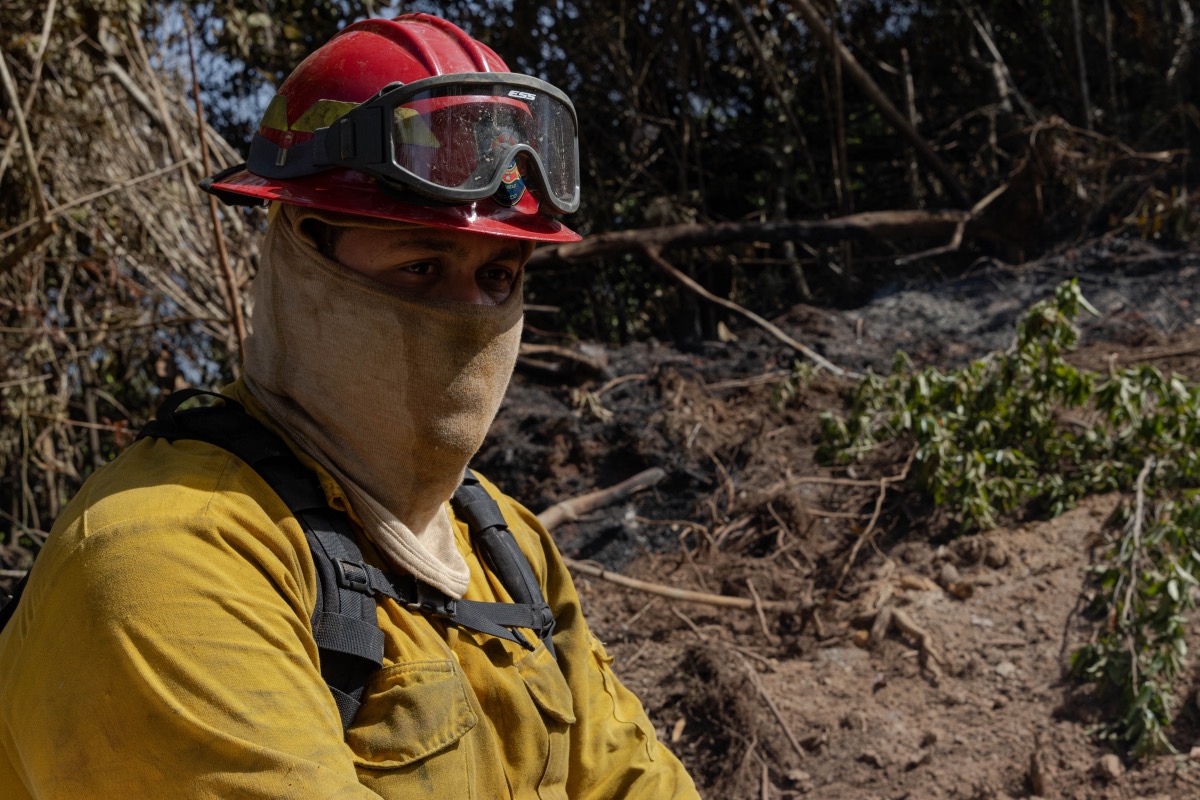

A firefighter takes a moment of rest between combatting a fire in Utuado, Puerto Rico, June 2023. (Carlos Edill Berríos Polanco/Latino Rebels)
SAN JUAN — The mountain was on fire. The ground shook. “The Utuado volcano woke up,” people were saying. They had never seen a fire like it there before.
José Nevárez Pérez, a burly man who used to work as a civilian diver for the U.S. Navy, spent the four days that the fire raged roaming the area behind his house, a walking stick in one hand, machete in the other. The fire had reportedly burned for at least a week on the other side of the mountain before it spread to the trees behind his house, where he lives with his family of four and their three dogs.
“I spend most of my afternoons walking up and down the forest—or at least I used to,” Nevárez Pérez told me as we watched columns of smoke swirl up over a forest canopy that had once been various shades of green but had become a mottled mess of black, gray, and brown. A National Guard Black Hawk helicopter had just dropped a torrent of water on a spot that was too difficult for firefighters to reach by foot.


The National Guard helicopter carries a Bambi Bucket full of water to dump on the fire in Utuado, Puerto Rico, June 2023. (Carlos Edill Berríos Polanco/Latino Rebels)
I had accompanied four firefighters from the Department of Natural and Environmental Resources (DRNA) the day before as they cut their way through thick brush. It was Iván Torres’s first fire, his Nomex shirt still bright yellow. He said he felt a rush of adrenaline while cutting the fire line, a foot-wide path dug down to the mineral soil that is meant to stop fire from advancing by depriving it of the vegetation it feeds on.
In the thick of the forest a gust of wind hit the smoke, stopping us in our tracks and blinding us for a few minutes. Strong winds are a great friend to a fire, as they can carry embers to areas previously unaffected, or relight areas that were already extinguished, at which point firefighting becomes a lopsided game of cat and mouse.
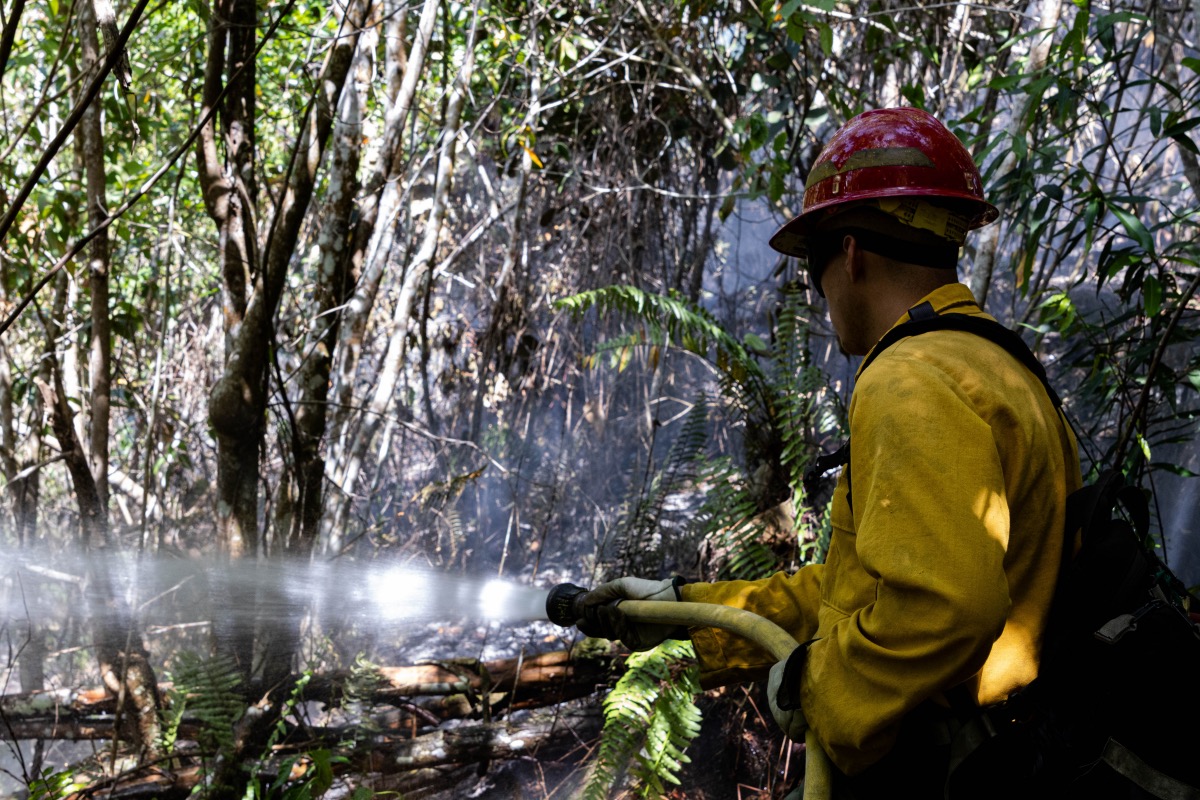

A firefighter douses embers with a hose, Utuado, Puerto Rico, June 2023. (Carlos Edill Berríos Polanco/Latino Rebels)
When I saw Torres the next day, his shirt was covered with heavy streaks of soot, and the fire had jumped the line. Another crew was where we had been, pumping as much water as they could over the flames.
By the time the fire was put out, it had burned over 50 acres. Two small earthquakes had produced the shaking neighbors reported.
“I’m not staying here again until the fire is completely out,” said Awilda Álvares Villanueva, a court secretary and Nevárez’s wife. She stood on the porch where she and her daughter had spent the last few days anxiously watching the firefighters move to and fro.
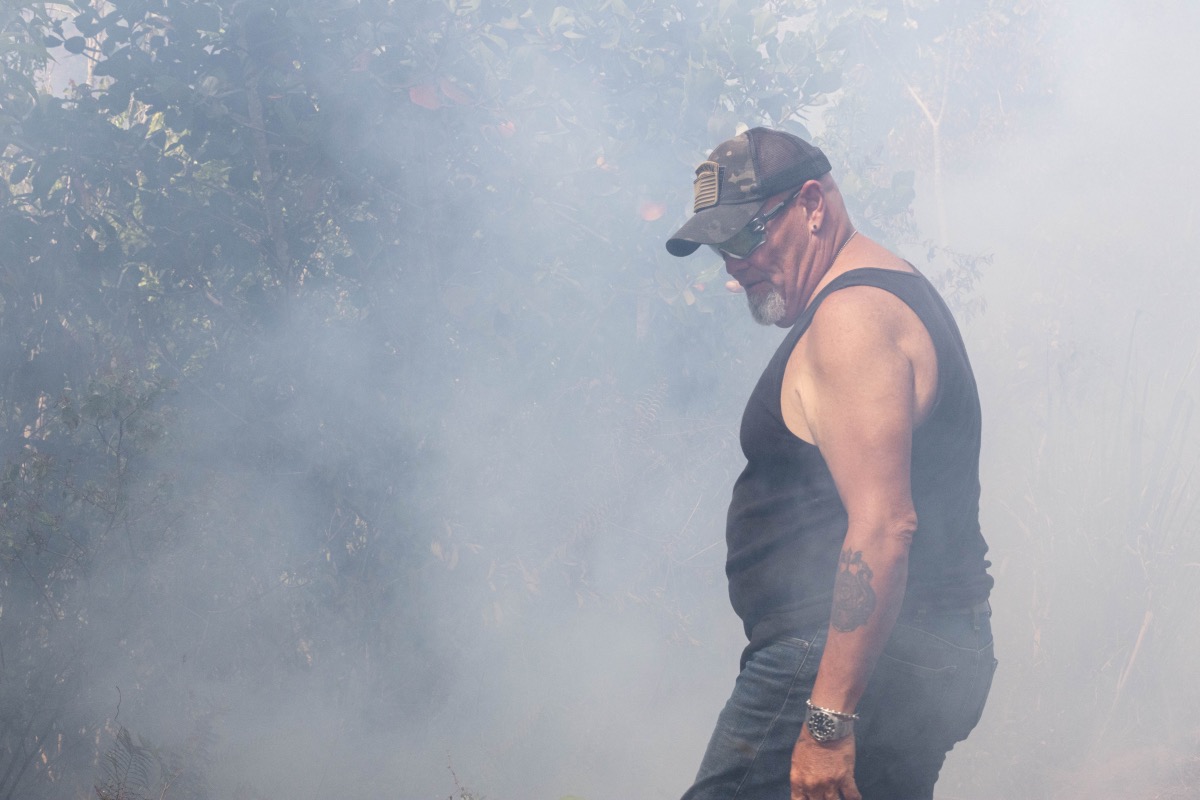

José Nevárez Pérez walks through the smoke caused by the fire behind his house in Utuado, Puerto Rico, June 2023. (Carlos Edill Berríos Polanco/Latino Rebels)
Multiple neighbors with breathing conditions, most of them elderly, had left their homes. Eufrasia Rosada drove her asthmatic husband down the mountain because his oxygen mask could not filter the smoke anymore and they worried about his health. Wildfire smoke contributes to 339,000 premature deaths worldwide every year, according to a 2012 report—and wildfires have only worsened in the last 11 years. The elderly and people with breathing problems are most at risk from inhaling wildfire smoke, which can cause infections, difficulty breathing, and even make people more prone to heart attacks. Plus smoke clouds are filled with cancer-causing substances.
The week before, Canadian wildfires burned an area twice the size of New Jersey, causing an apocalyptic yellow cloud to descend over much of the East Coast, forcing people to remain indoors to avoid the unsafe air or venture outside wearing the same masks they wore during the COVID pandemic.
The Puerto Rico fire burned in June, the islands’ second hottest month on record, and the hottest June ever recorded in the continental U.S. Then, a few days into July, the Earth experienced its hottest day in recorded history—four days in a row. It began on Monday, July 3, with an average global temperature measured at 61.16 degrees Fahrenheit, according to the U.S. National Centers for Environmental Prediction. By Thursday the average temperature had risen to 63.01 degrees Fahrenheit.
Nevárez’s family did not have air conditioning, so their options were to leave the windows shut and bake inside or open them and hope an occasional breeze swept through. They chose the latter, and soon everything they owned was covered in ash, the house they had been renting for 10 months smelling like charred barbeque. They had been considering buying the house, but the fire made them think twice—especially if a similar fire could happen again.
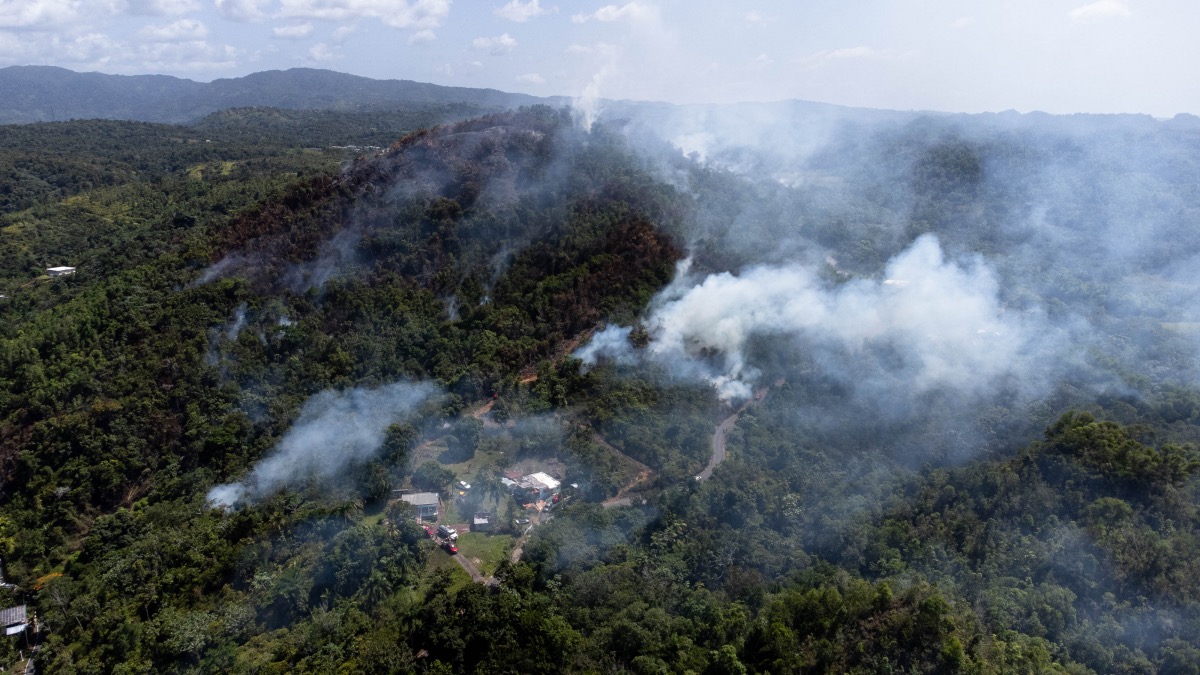

Fires burn on a mountain in Utuado, Puerto Rico, June 2023. (Carlos Edill Berríos Polanco/Latino Rebels)
“It wasn’t common to hear about forest fires in Puerto Rico, and now it’s become common,” explained Rafael Méndez Tejeda, a member of the Puerto Rico Climate Change Council and the director of the Center for Multidisciplinary Investigations at the University of Puerto Rico-Carolina, adding that heat waves “will become almost normal during the summer.”
Between 1950 and 2014, Puerto Rico’s average temperature rose by about 36.03 degrees Fahrenheit, according to a study conducted by Méndez Tejeda.
There have been approximately 2,500 forest fires in Puerto Rico so far this year, nearly the same number as in all of 2022 and more than double the number in 2017. The years 2012, 2013, and 2021 witnessed some of the highest totals ever recorded, with more than 4,000 forest fires each.
While some evidence points to fires being sparked by spontaneous combustion, the great majority are caused by human hands, ,whether intentional or not, Méndez Tejeda explains. Some fires, caused by a cigarette butt in the wrong place at the right time or farmhands wanting to clear a field through burns can spread to endanger communities, especially when there’s a heat wave or drought.
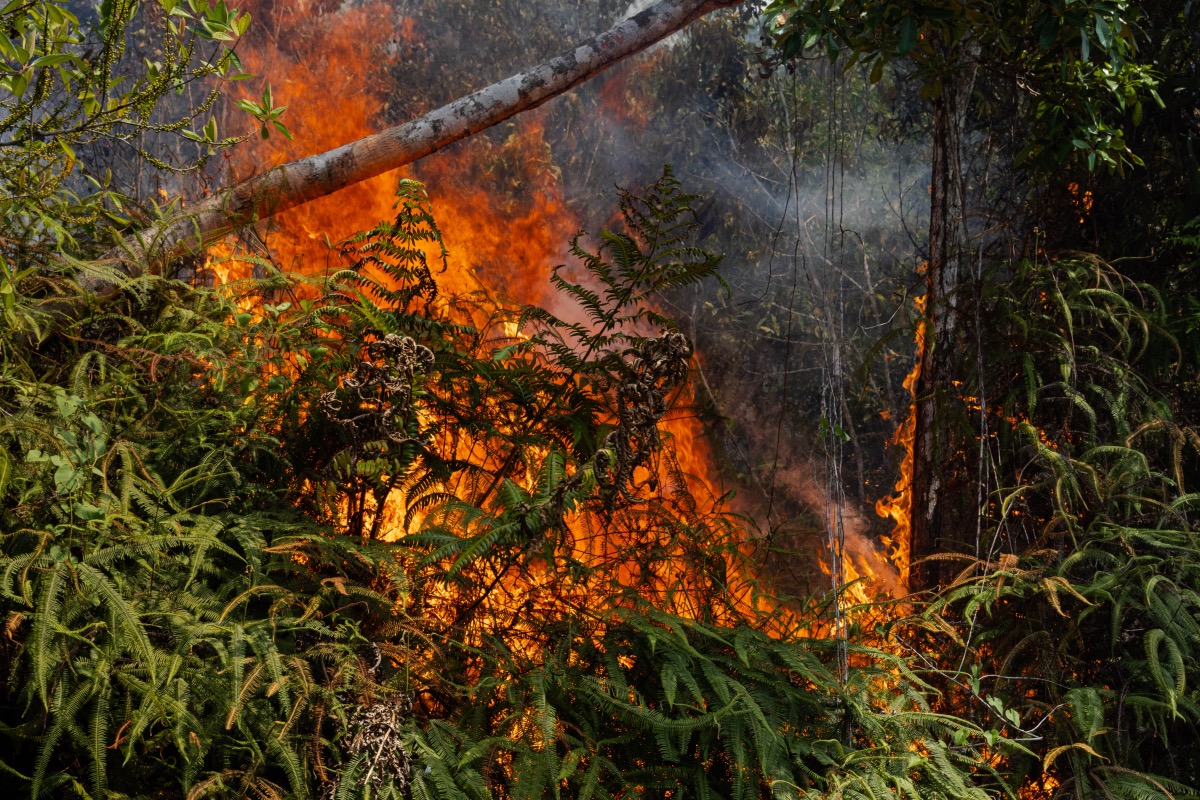

Fire burns through trees in Utuado, Puerto Rico, June 2023. (Carlos Edill Berríos Polanco/Latino Rebels)
Available data does not clearly specify the rate of increase in the number of wildfires in Puerto Rico since the start of the century, but Méndez Tejeda says that fires have certainly become more frequent. Current data also shows that current relative and absolute conditions will likely yield an increase in fire occurrence and size.
“We’re definitely going to see more violent, more aggressive forest fires, and it’s going to be a phenomenon that affects all of Puerto Rico,” Lt. Joel Figueroa Betancourt told me over the phone from California. He remembers fighting the fires in previous years, “where we had never seen them before.”
Wildfires mostly affect the southern region, which is much drier than other parts of Puerto Rico. Peak wildfire season begins in January and lasts about 18 weeks. Meanwhile, the drought season lasts from December to March, plus a midsummer dry period during June and July. Changing rainfall patterns, however, and global heating have caused these dry spells to become more extreme and for wildfires to burn mostly year-round.
At present, much of northern and western Puerto Rico is under an excessive heat advisory. Such advisories have become an almost daily occurrence for some municipalities, leading their residents to hope for a light rainstorm to assuage the heat but not cause damage. Many worry though that they could see a repeat of 2022, where the drought was “fixed” by Hurricane Fiona, which dumped so much rain on the archipelago that it caused unprecedented amounts of flooding.
Droughts, which Puerto Rico has been experiencing a lot more over the past few decades, are a significant contributor to forest fires throughout the archipelago. At the same time as the fire blazed in Utuado, more than 34 percent of Puerto Rico was abnormally dry, and more than five percent was experiencing drought.
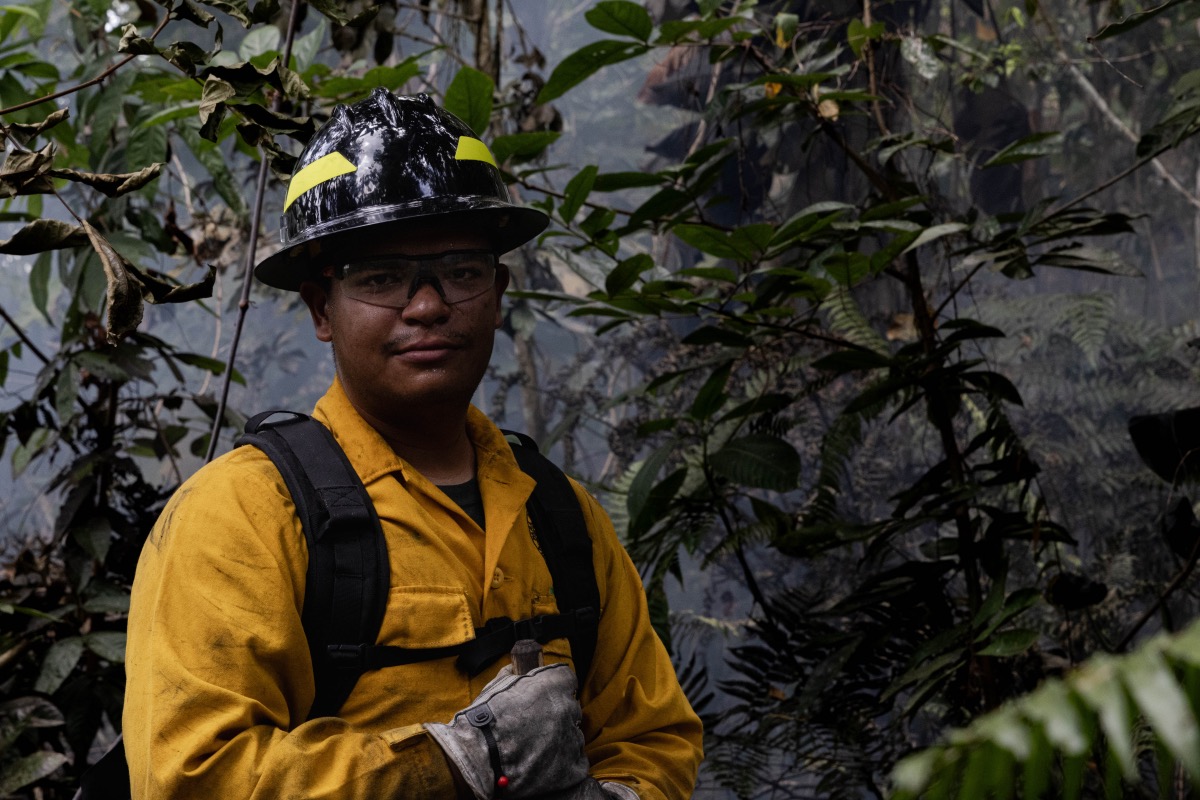

Firefighter Ivan Torres poses for a picture while putting out embers in Utuado, Puerto Rico, June 2023. (Carlos Edill Berríos Polanco/Latino Rebels)
While Puerto Rico is mostly known for its beautiful beaches and the only national rainforest in the United States, climate change has caused reservoirs to run dry and led the government to ration water during particularly severe droughts. In the span of two years, Puerto Rico saw months of extreme drought followed by massive rains from two category 5 hurricanes. The archipelago has experienced six instances of severe drought since mid-2015, with the latest occurring in June 2023, which was only subdued by a small series of rainstorms.
Harsh droughts have affected millions of Puerto Ricans over the last two decades, causing water rationing as well as a state of emergency in 2020.
“If we see more drought events, we’ll see more frequent and propagation of extreme fire events,” said Ian Colón Pagán, a meteorologist for the National Weather Service in Puerto Rico.
Tracking droughts is important, as it can show how vulnerable an area is to wildfires, as well as how much water firefighters will need to dump on a fire. Unlike parts of North America with highly combustible pine forests that habitually catch fire, Puerto Rico has very few pine trees. Much of the vegetation that catches fire in Puerto Rico is low to the ground, like ferns, or filled with moisture, like the guarago or sierra palm. Fires typically spread through the undergrowth, only slowly spreading to the trees above it.
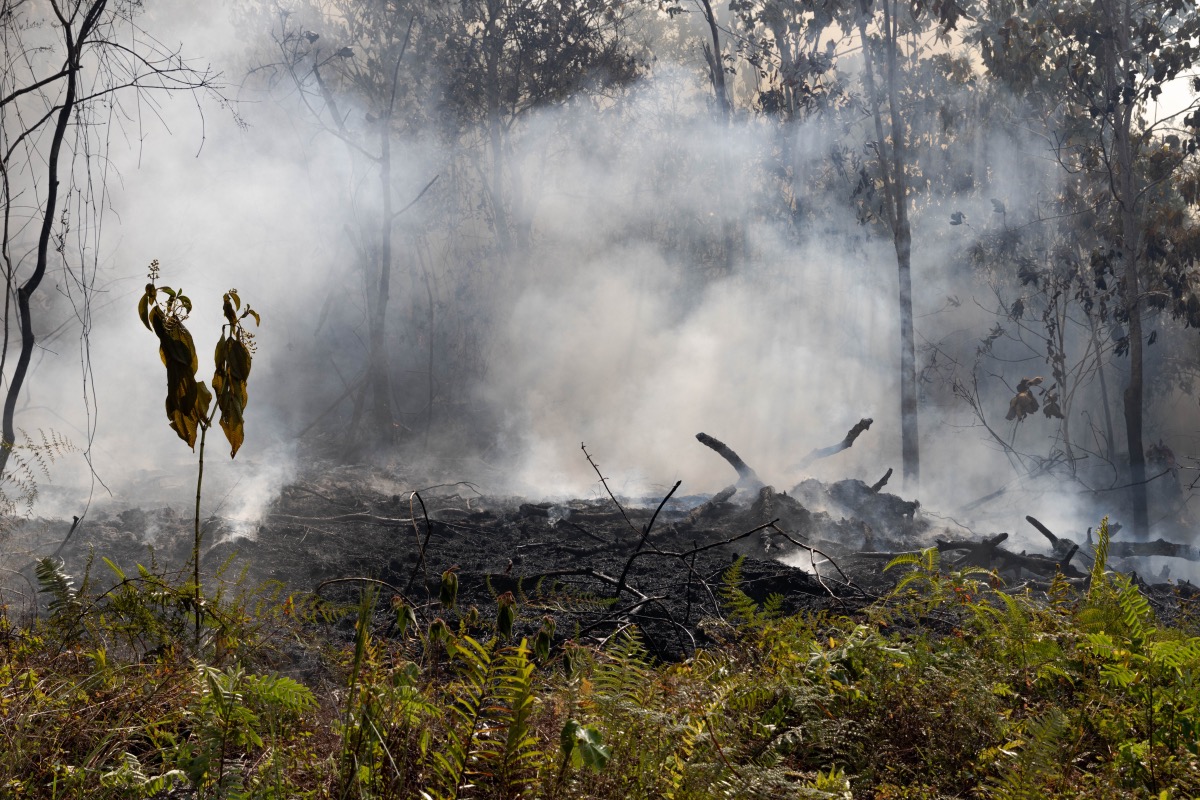

Aftermath of a wildfire in Utuado, Puerto Rico, June 2023. (Carlos Edill Berríos Polanco/Latino Rebels)
And forest fires and heat waves do not just affect people. While walking with the DRNA firefighters through the forest and hearing the crackle of flames —which they call “ranitas,” since they sound like jumping frogs— one firefighter, a biologist by trade, said she worries about the more than dozen species of frogs, snakes, and lizards that would be affected by the fire.
“We’re not going to hear the coquís for a long time,” said Nevárez’s daughter Natalia from the porch, referring to the small frog that is Puerto Rico’s unofficial national animal, known for its unique high-pitched call that serenades Puerto Ricans every night. Natalia says she picked up a badly burned coquí and moved it to the other side of the fire break, hoping it would survive.
A recent study found that warmer temperatures fueled by climate change have led coquís to move further up the mountains, causing them to grow smaller and have a higher pitch. If trends continue, the increase in temperature could cause the collapse of the coquí population altogether, Sebastian Meenderink, who studies the coquí, told the Guardian.
Battered by storms, earthquakes, overtourism, and now fires, Puerto Rico can’t seem to catch a break. As the effects of climate change intensify across the Caribbean, it will only lead to more extreme weather events that will in turn force Puerto Ricans out of the places they once considered “safe” and make many reconsider their life plans, just like the fire behind their house made the Nevárez family reconsider their plans to buy the house that now has layers of scorched earth behind it.
***
Carlos Edill Berríos Polanco is the Caribbean correspondent for Latino Rebels, based in San Juan, Puerto Rico. Twitter: @Vaquero2XL


